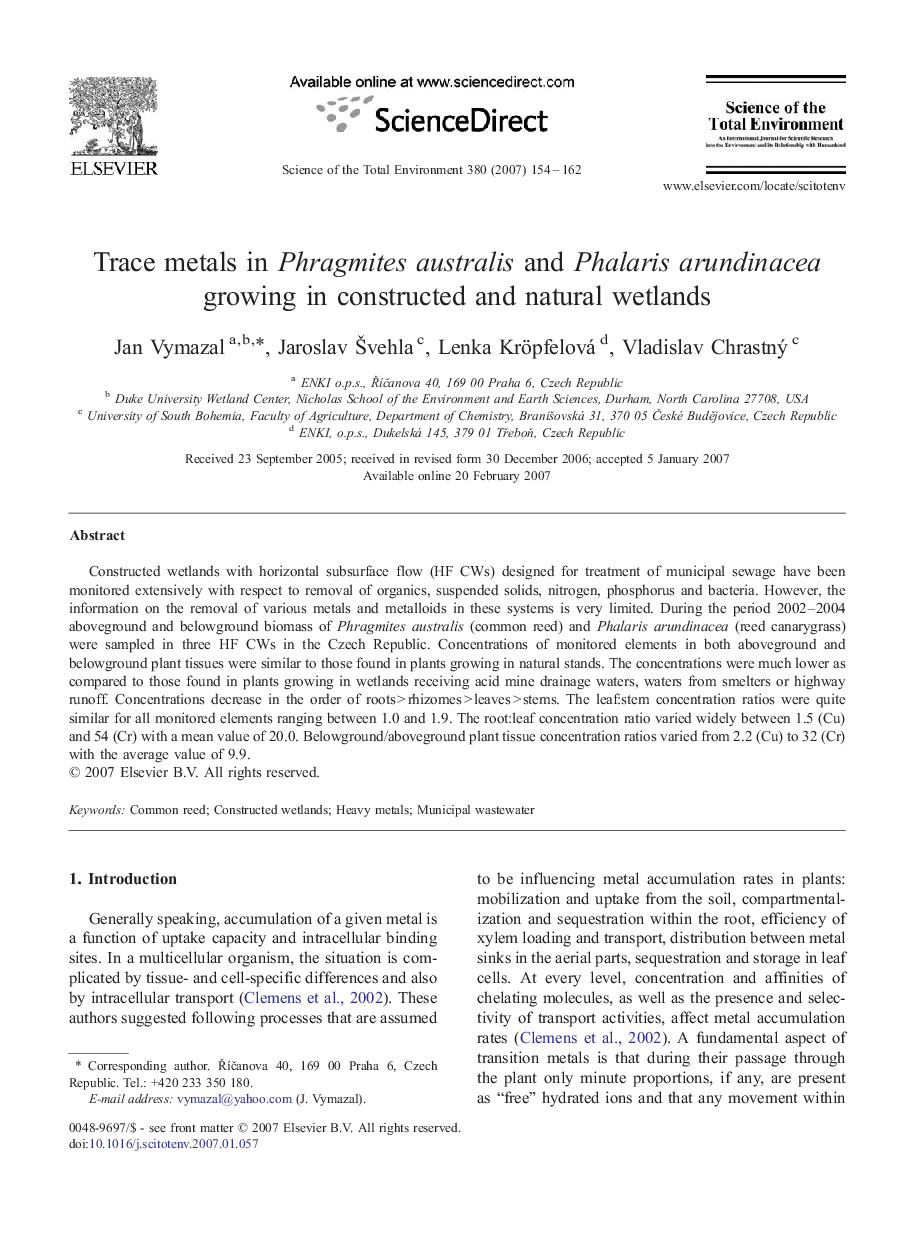| Article ID | Journal | Published Year | Pages | File Type |
|---|---|---|---|---|
| 4433281 | Science of The Total Environment | 2007 | 9 Pages |
Constructed wetlands with horizontal subsurface flow (HF CWs) designed for treatment of municipal sewage have been monitored extensively with respect to removal of organics, suspended solids, nitrogen, phosphorus and bacteria. However, the information on the removal of various metals and metalloids in these systems is very limited. During the period 2002–2004 aboveground and belowground biomass of Phragmites australis (common reed) and Phalaris arundinacea (reed canarygrass) were sampled in three HF CWs in the Czech Republic. Concentrations of monitored elements in both aboveground and belowground plant tissues were similar to those found in plants growing in natural stands. The concentrations were much lower as compared to those found in plants growing in wetlands receiving acid mine drainage waters, waters from smelters or highway runoff. Concentrations decrease in the order of roots > rhizomes > leaves > stems. The leaf:stem concentration ratios were quite similar for all monitored elements ranging between 1.0 and 1.9. The root:leaf concentration ratio varied widely between 1.5 (Cu) and 54 (Cr) with a mean value of 20.0. Belowground/aboveground plant tissue concentration ratios varied from 2.2 (Cu) to 32 (Cr) with the average value of 9.9.
